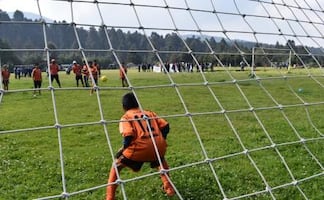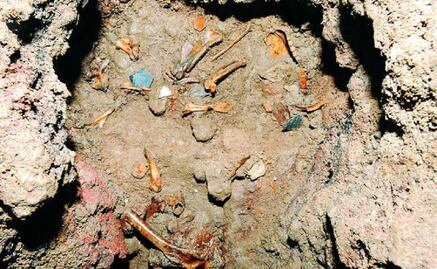Más Información

Sheinbaum exige a la ONU intervenir en conflicto entre EU y Venezuela; México podría ser “un punto de negociación”, dice

Detienen a 3 miembros de célula dedicada al uso de artefactos explosivos en Michoacán; los ligan a extorsiones
Mexico’s National Museum of Anthropology
will offer a course called “ The Ancient Nahuas’ Oral Literature ” from August 8 to 31 October , which will cover an approach to the Náhuatl language through its different cultural forms and manifestations, particularly regarding mythical tales and songs.
The course will also teach about the “ huehuetlahtoli ” (an ancient word transmitted from an elder), along with superstitions, riddles, and popular linguistic expressions such as the wordplay style known as “albur.”
The three-month course , promoted by the National Institute of Anthropology and History (INAH) , will be given by Ignacio de la Garza Gálvez , a Master in Meso-American Studies by the National Autonomous University of Mexico (UNAM) , on Wednesdays at 19:00 and 21:00 hours .
The sessions will focus on the use of the Náhuatl language within the Mexica (Aztec) civilization , as well as its legacy in the national territory.
According to the professor, Náhuatl was not only spoken by the Mexica people; well before the Aztecs’ arrival in the Valley of Mexico , Náhuatl was already widely spread. “The Toltecs , who grew to become an empire, were known to use the language, or at least one of its variants called ‘ popoloca ’.”
Gálvez added that, in Mexico-Tenochtitlan , Náhuatl was transmitted through the family and the community, but there were also educational institutions such as the “ telpochcalli ,” where young people learned about religion, warfare, crafts, trade, and most likely, the correct use of language.
There was also the “ cuicacalli ” (the House of Chants ), where the Mexicas learned about music, dance, and songs which were meant to pay tribute to the gods, transmit the history of their people, and remember their ancestors.
“The elegance of speech, that is to say, the correct use of language, was an indicator of social status. Thus, the nobility was given a more rigorous education, and its members had the privilege to attend the Calmecac (the most important teaching center), where they made to speak with refinement, in a calm, though steady voice, employing the most sophisticated rhetoric devices.
“One could tell if someone was a ‘ pilli ’ (a noble man or woman) or a ‘ macehual ’, because of the way they spoke. The former would speak in a calm and elegant manner, while the latter were more talkative, loud, and rude,” he explained.
The course, meant only for adults, will be free of cost. With a maximum class size of 104 participants, the Museum will offer an attendance certificate to those attending all sessions.
dm
Noticias según tus intereses
[Publicidad]
[Publicidad]














